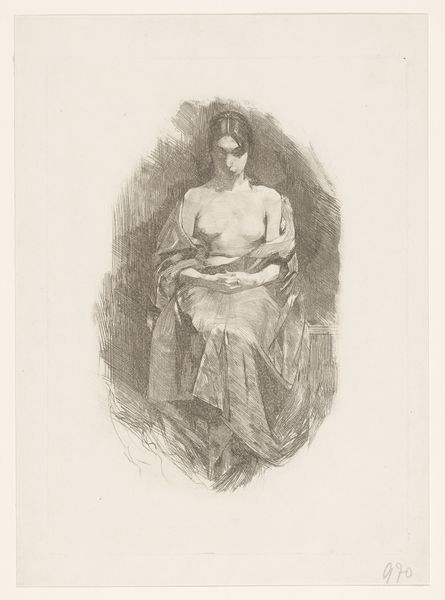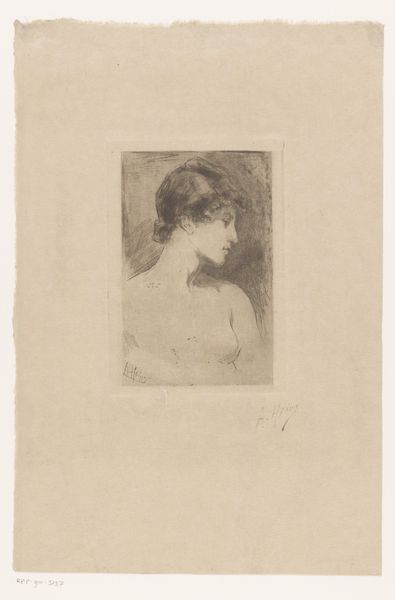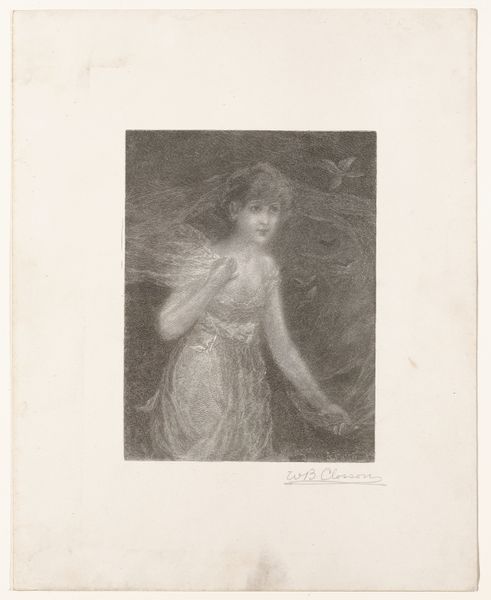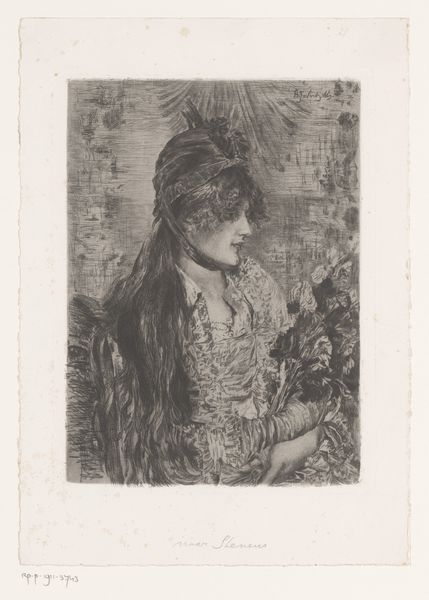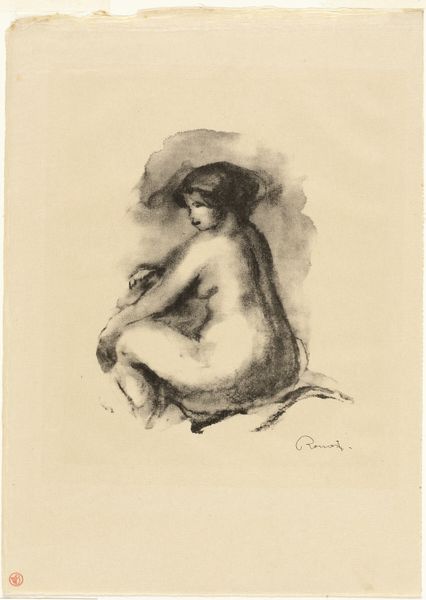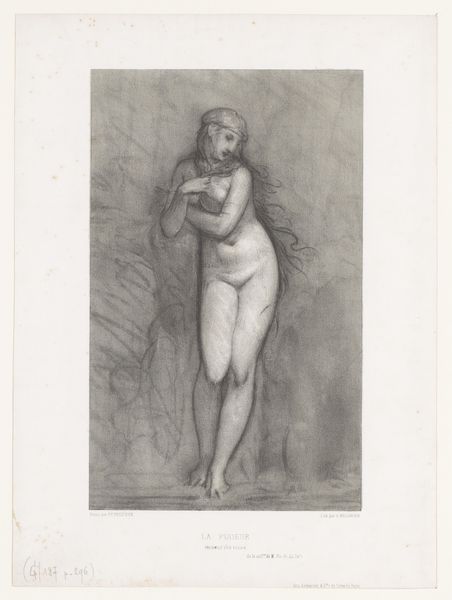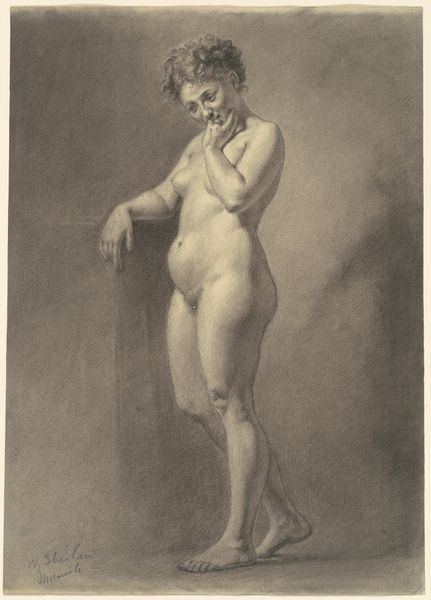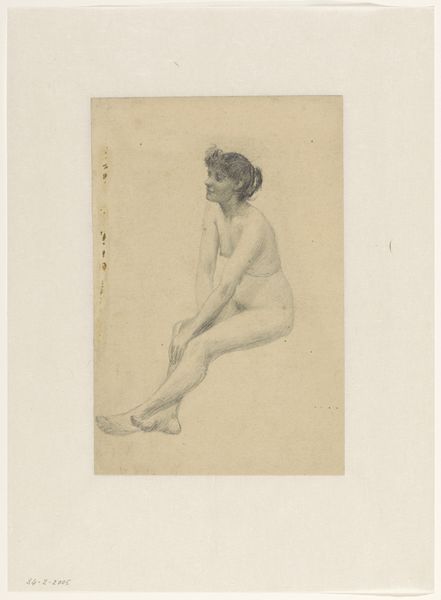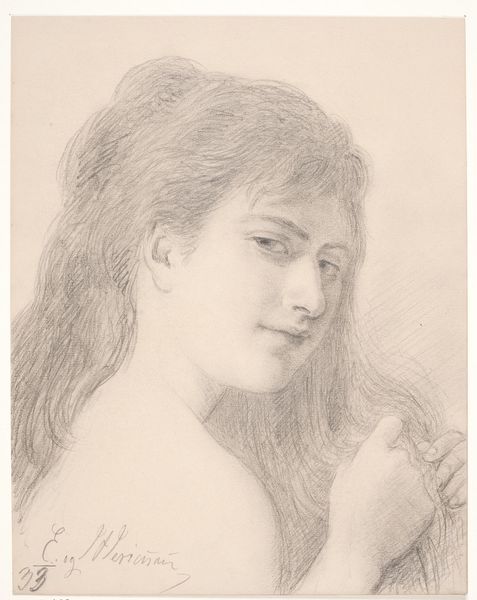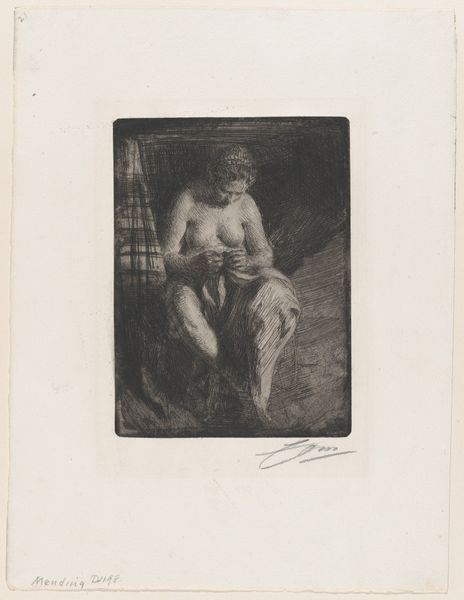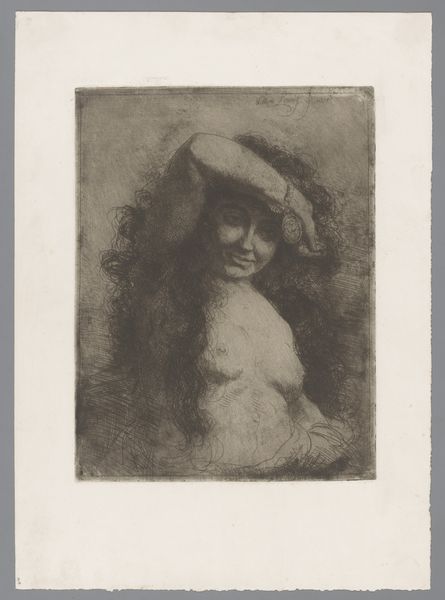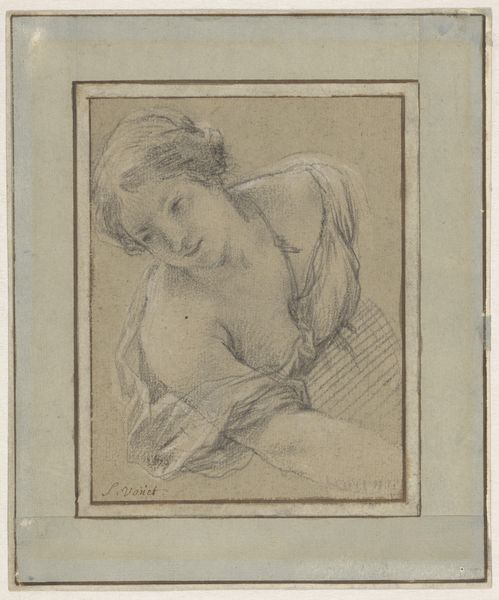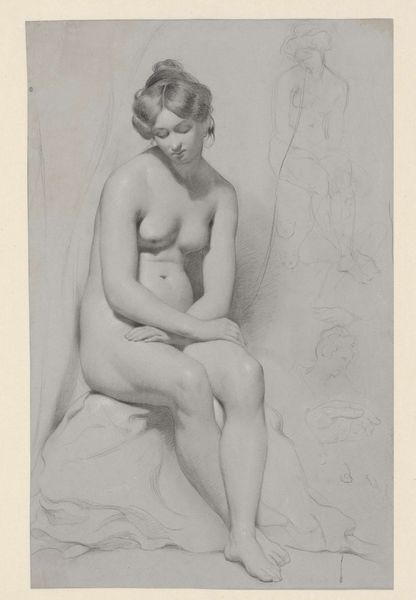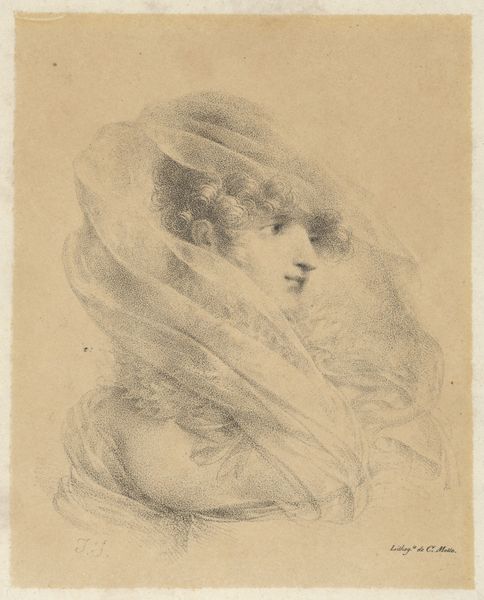
drawing, charcoal
#
portrait
#
pencil drawn
#
drawing
#
charcoal drawing
#
pencil drawing
#
symbolism
#
portrait drawing
#
charcoal
#
academic-art
#
nude
Dimensions: height 365 mm, width 248 mm
Copyright: Rijks Museum: Open Domain
Curator: This work is entitled "Portret van een onbekende vrouw," or "Portrait of an Unknown Woman." It’s an interesting charcoal and pencil drawing created sometime between 1891 and 1938 by the artist Théo Dijkwel. Editor: My initial reaction is that it’s very dreamlike. The hazy charcoal softens the lines, giving her an almost ethereal quality. There’s a quietness to her gaze, a hint of melancholy, perhaps? Curator: It is compelling. From a material perspective, the choice of charcoal and pencil is interesting, allowing for subtle gradations of tone. Look closely and you see the build-up of the charcoal creating depth, contrasting the darkness of the background to highlight her figure. We often overlook the physical labor and time invested in pieces like this, and the social implications of academic nude studies for women at the time, both artist and model. Editor: The symbolic nature of her pose is really interesting. Her hands are clasped, as if she's guarding something. Is she protecting her vulnerability, or concealing something from us? This pose echoes similar depictions of modesty and virtue throughout art history. Think about Venus Pudica. Dijkwel seems to engage with that visual language, but there is also something about the directness of her gaze that suggests a more knowing or assertive presence than many earlier figures. Curator: Yes, while the style borrows from academic traditions, the intimacy achieved with these relatively humble materials also brings it closer to something more private. A study, perhaps, or a piece exploring the artist's personal perceptions. We often ignore the socioeconomic conditions and networks required to access these resources, these artistic training institutions and model, thereby reinforcing a very specific vision of beauty, taste and power. Editor: Precisely, and in that way, the ‘unknown woman’ is herself a blank slate. The lack of specific identifiers—no jewelry, no detailed background—forces us to confront her as a symbol, and as a study of femininity itself. Her story, her identity, is ultimately deferred onto us. Curator: It’s amazing how even through relatively simple material and gesture this portrait creates a fascinating dialogue on representation, production and artistic skill. Editor: Indeed, by observing Dijkwel’s rendering, it allows us to observe how potent are visual symbols, which are embedded deeply within our own conscious understanding of personhood and history.
Comments
No comments
Be the first to comment and join the conversation on the ultimate creative platform.
